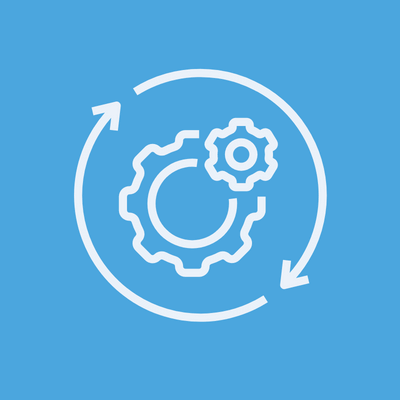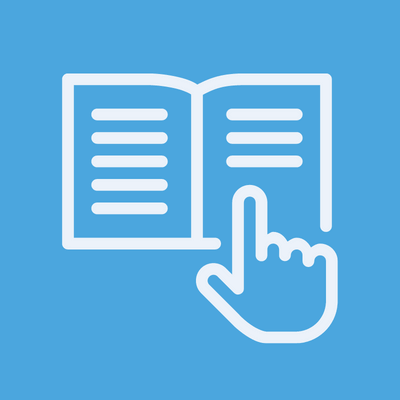Between August 2022 and November 2022, we will publish a series of blog posts as part of our Living Improvement: Resources for Educators from the 2021 Carnegie Summit on Improvement in Education (and elsewhere). Resources will focus on leadership, equity, data, and coaching. In this post, we present resources focusing on the role of data and measurement in continuous improvement.
How do you know if a change is an improvement? This is one of the central questions — if not the central question — of improvement science. It seems so simple, but there are many steps to get to an answer: How can data inform the identification of a problem to focus on? How can you concretely specify an aim with a measurable goal? What data can you collect about your system and practices that points towards changes that you should try? What are you measuring when you test changes? What data are needed to know if a change in practice actually impacts the aim? Districts and schools face both an abundance and a dearth of data: education professionals find themselves awash in lagging outcome data, such as standardized tests or annual attendance rates, but often lack real-time data on the changes they are making on a day-to-day basis. Schools make all kinds of changes each year, but rarely are these changes accompanied by the data and measurement tools, routines and infrastructure needed to keep track of what’s working for whom and in which contexts. Evidence related to changes is too often anecdotal and too infrequently collected to allow the opportunity to learn and adjust. At its worst, data and measurement in education can contribute to a culture of anxiety and fear, which is detrimental to both learning and reform.
As you will see from the resources in this release, however, collecting the right data to inform our efforts can not only be informative, but empowering. “Empowering” isn’t a word that educators usually associate with data, but the improvers in this release are trying to change the narrative about how data are collected and used and whose voices inform those efforts. Instead of seeing the use of data and measurement only as lagging indicators that tell us what happened after the fact, the improvers in this release show us how data can be timely, insightful, and even liberating.
Set 1: Measurement for Improvement
Explore this set for an overview of how to use measurement in improvement science and the various types of measures that can be useful in an improvement context. These resources were included in the “Measurement for Improvement” session at the 2020/2021 Summit.
Presenters:
- Dave Sherer, Senior Associate, Evidence & Analytics, Carnegie Foundation for the Advancement of Teaching
- Jon Norman, Senior Associate and Managing Director, Evidence and Analytics, Carnegie Foundation for the Advancement of Teaching
 |
WATCHMeasurement for ImprovementThis full session provides an overview of how to use measurement in improvement science, the distinct qualities of measurement for improvement, and various types of measures that teams can create. Watch Video » |
 |
ACTIVITYMeasurement For Improvement HandoutThis handout is necessary for the scenario discussed in the session above (29:19). This example can be used to understand the differences between various types of measures and the outcomes they describe. |
Set 2: Measuring Developmental Relationships
Learn more about survey tools developed by the CORE Districts to measure the developmental relationships students share with adults in the school building and the impact these relationships have on student on-track work. These resources were included in the “On Track for Success: Leveraging Data and Improvement to Transform 9th-Grade Trajectories” session at the 2021 Summit.
Presenters:
- Amanda Meyer, Director of Improvement, CORE Districts
- Juli Coleman, Chief of Improvement, School Networks, CORE Districts
 |
READBTSC Relationships Report GuideThis report defines the five key elements that make relationships powerful in young people’s lives and provides a model for using survey methods to measure students’ developmental relationships with teachers and other adults. |
 |
READDevelopmental Relationships FrameworkThis one-pager from the Search Institute illustrates the 5 key elements of the developmental relationships framework, explaining how each is critical to creating meaningful relationships with young people. This resource supplements the survey support guide listed above. |
 |
WATCHDriver Measure: Student-Adult RelationshipsThis full session provides an overview of how to use measurement in improvement science, the distinct qualities of measurement for improvement, and various types of measures that teams can create. Watch Video » |
Set 3: Educational Opportunity Audits
Explore the improvement journeys of three school districts and learn about the power of Educational Opportunity Audits for measuring equitable accessibility to course work and college eligibility rates for Black and Latinx Students in California. These resources were included in the “Educational Opportunity Audits: Engaging Stakeholders, Exposing Inequities, and Taking Action” session at the 2021 Summit.
Presenters:
- Jeannette LaFors, Consultant, XQ Institute; Principal, Kelefors Consulting; Former Director of Equity Initiatives, The Education Trust–West
- Sid Salazar, Former Superintendent, Alvord Unified; Former Assistant Superintendent, San Diego Unified; Executive Coach, National Center for Urban School Transformation
- Mayra Lara, Associate Director of Educator Engagement, The Education Trust–West
 |
WATCHWhat is an Educational Opportunity Audit?In this segment, presenters describe the Educational Opportunity Audit, a process for collecting a variety of quantitative and qualitative data that offer insight into current state of students’ access to and success in completing coursework in a school or district. With insight into what is happening and why provided by this data, teams can develop improvement projects aligned to their specific needs. Watch Video » |
 |
READPajaro Valley Case BriefThis case brief about the Pajaro Valley Unified School District details how the district used the findings of the Educational Opportunity Audit to focus their work to address racial inequities in school enrollment. |
 |
READSan Diego Case BriefThis case brief describes the data and findings generated by the Educational Opportunity Audit conducted in San Diego Unified School District, the Blueprint for Action developed as a result of those findings to increase access to college and career preparatory courses for students of color, and the strategies that contributed to the district’s success. |
 |
READNapa Valley Case BriefThis case brief describes the steps taken by Napa Valley Unified School District to increase access to college and career preparatory courses based on findings from the Educational Opportunity Audit. Actions resulted in an increase in eligibility for California’s public university system for Black and Latinx students. |
Set 4: Using Data to Inform Evolving Improvement Efforts
Over several years of learning with schools in a College Readiness NSI, New Visions for Public Schools sharpened the focus of their work to increase 9th grade success based on evidence they collected. Hear network leaders describe their learning and the shifts they made, and how data was used throughout the process to inform those changes and to bring even greater focus to the network’s shared learning. These resources were included in the “How Data Informed the Evolution of Continuous Improvement in Our College Readiness Network for School Improvement” session at the 2021 Summit.
Presenters:
- Mark Dunetz, President, New Visions for Public Schools
- Nikki Giunta, Chief of Staff, New Visions for Public Schools
 |
WATCHBeginning the Work: Focusing on IndicatorsHear leaders of the College Readiness NSI describe the evolution of their network structure and strategy over their first two years of work, including how they began to focus in on particular indicators to track progress towards their aim. Watch Video » |
 |
WATCHLearnings From Year 2Network leaders describe how they used data and findings from their first year of work to adjust their focus going into their second year of work, and the ways they helped schools to organize and analyze data in order to identify focal students to engage with the interventions. Watch Video » |
 |
WATCHImpact StoriesListen to impact stories from two schools in the College Readiness NSI. The first story illustrates how a school team used data to identify individual student progress and needs. The second story describes the internal progression rubric that networks can use to document network health in order to improve student outcomes and meet their overall aim. Watch Video » |
 |
READPDFs Around Why GPA is Important (11 languages)This handout, translated into 11 different languages, was used with students to illustrate the importance of meeting academic milestones to stay on track for ontime graduation and college acceptance. While these milestones are specific to the New York system, the handout provides a model of the types of resources teams can create to engage students and families with their improvement aim. |
 |
READCorresponding Slide Deck for Whole Group MeetingsUse this presentation as a model to illustrate how to share resources related to college on-track work with students and families. The academic milestones mentioned in this resource are specific to a New York Public school context; however, they serve as a helpful and highly adaptable model for creating resources to supplement improvement work and build awareness. |
 |
READAdvisory Planning ChecklistThis toolkit is an example of a change idea from the College Readiness NSI and leverages a set of interviews with coaches and resources from thought leaders in the field to present consideration and guidance in creating advisory programs for students. |
 |
READStudent Perception Survey ToolkitThis toolkit highlights how the College Readiness Network for School Improvement used student perception surveys to inform their work and improve student outcomes. It includes sample survey items in each category, as well as additional references for investigating student perception. |
October 11, 2022
This series of blog posts presents resources for educators from the 2021 Summit on Improvement in Education (and elsewhere). In this post, we present resources focusing on the role of equity in continuous improvement.
November 17, 2022
In early October, Phoenix Union High School District (PXU) hosted participants of the Carnegie Learning Leadership Network (Carnegie LLN) to reimagine high schools and move beyond time-based models of learning like the Carnegie Unit.






